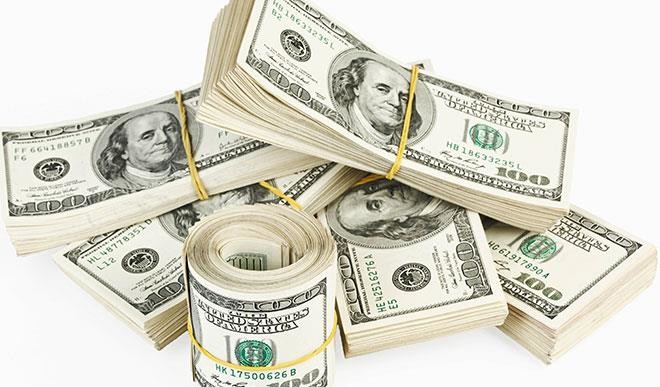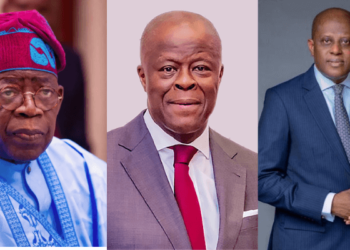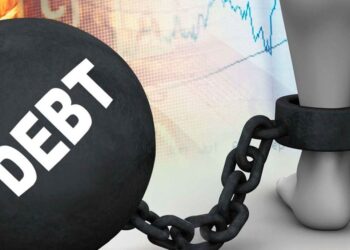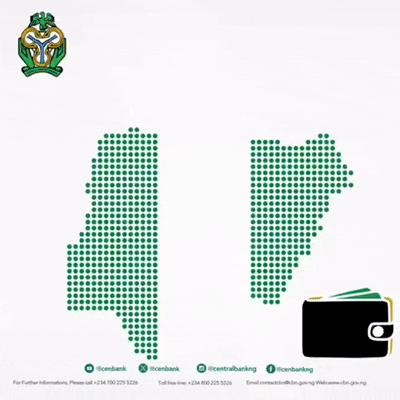The dollar flirted with a two-month peak on Thursday after Federal Reserve Chair Jerome Powell stuck to his patient approach on rates in a closely watched policy decision and offered little insight on when they could be lowered.
The greenback was also on track for its first monthly gain for the year, bolstered by a hawkish Fed and U.S. economic resilience, with uncertainty over tariffs beginning to ease given recent trade deals struck by Washington.
Against a basket of currencies, the dollar was last steady at 99.77 , not far from a two-month peak of 99.987 it hit in the previous session.
The dollar index was set for a monthly gain of more than 3%.
U.S. President Donald Trump’s chaotic tariffs and fears of the dollar’s demise earlier this year had undermined the currency and given it the worst start to the year since the floating exchange rate period.
Those worries have since abated, giving the dollar new life.
The latest push higher for the currency came on the back of the Fed’s policy decision on Wednesday, after Powell reiterated it was still premature to ease rates.
“We’ve seen the classic correlation still holding, in the sense that we’ve seen a hawkish Fed push up front-end yields and the U.S. dollar, equities have struggled, and the credibility of the Fed has also been probably reinforced by the view that the Fed chair is still in command,” said Rodrigo Catril, senior currency strategist at National Australia Bank.
“The dollar is not just consolidating, but it’s actually getting a little bit of upward momentum … The broader picture as well is that all these tariffs, there’s at least an initial impression that the U.S. is the one that’s got the upper hand.”
The euro was last 0.25% higher at $1.1433, having slid to a seven-week low in the previous session. It was on track to lose 3% for the month.
Sterling languished near a 2-1/2-month low and last bought at $1.3248. It was similarly headed for a 3.5% monthly decline.
Traders have scaled back expectations for Fed cuts this year following Powell’s comments, now pricing in about 35 basis points of easing by December.
Markets have also been faced with a blitz of tariff announcements ahead of an August 1 deadline for countries to secure trade deals or face steep levies.
READ ALSO:Canada Plans To Recognize Palestinian State, Raising Allies’ Pressure On Israel
South Korea became one of the latest nations to reach an agreement with the U.S., after Trump on Wednesday said Washington will charge a 15% tariff on imports from the key Asian ally.
The South Korean won strengthened on the news, rising 0.3% to 1,389.20 per dollar.
Trump on Wednesday also slapped a 50% tariff on most Brazilian goods and said the United States is still negotiating with India on trade.
BOJ MEET
Key for investors in Asia on Thursday will be the Bank of Japan’s policy decision, where expectations are for the central bank to stand pat on rates.
Focus will be on whether Governor Kazuo Ueda offers any hints of another rate hike this year, as the BOJ weighs lingering tariff-induced risks to growth and mounting inflationary pressure from higher food costs.
The yen wobbled near a four-month low at 149.29 ahead of the decision, headed for a monthly loss of 3.5%.
“In the near term, the balance of risk is gradually shifting toward a more hawkish path – especially if inflation expectations begin to firm or household demand improves meaningfully,” said Howe Chung Wan, head of Asian fixed income at Principal Asset Management.
“But for now, the central bank’s stance remains one of seeking more flexibility, prioritising stability over any premature tightening.”
In other currencies, the Australian dollar edged up 0.13% to $0.6443 after sliding more than 1% on Wednesday. It was headed for a monthly drop of 2%.
The New Zealand dollar rose 0.2% to $0.5906, having also lost more than 1% overnight. It was set to lose roughly 3% for the month.













